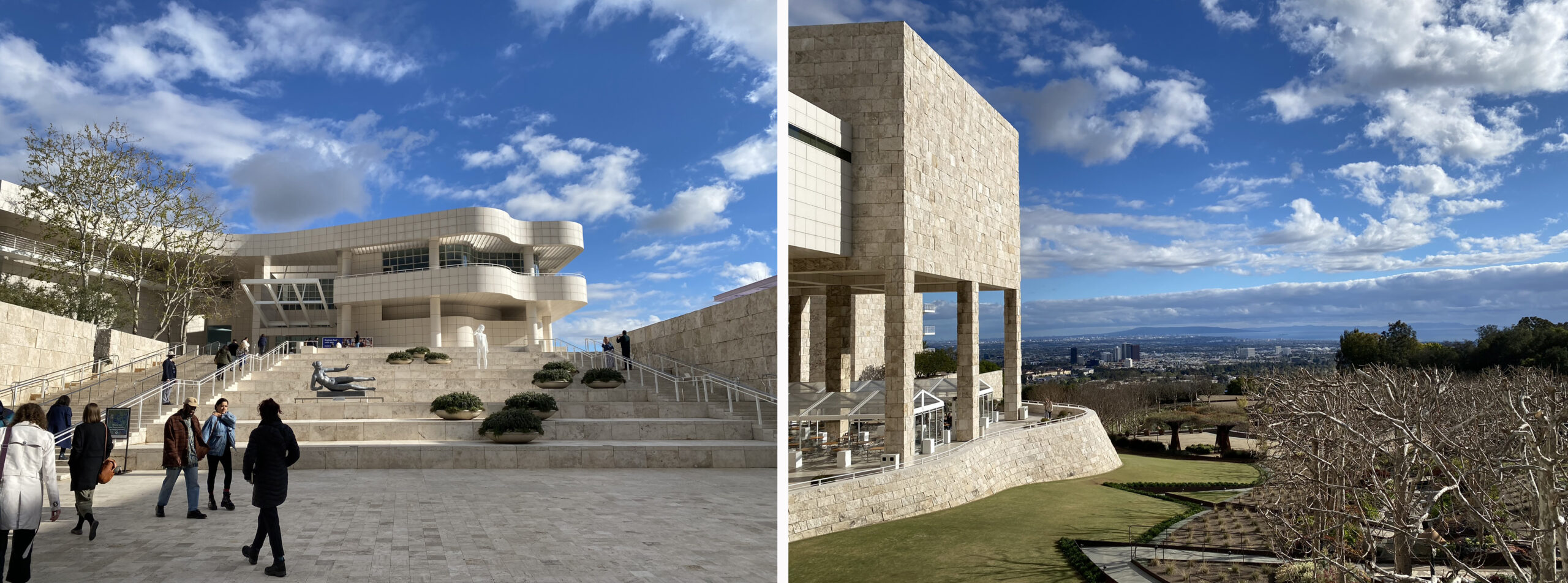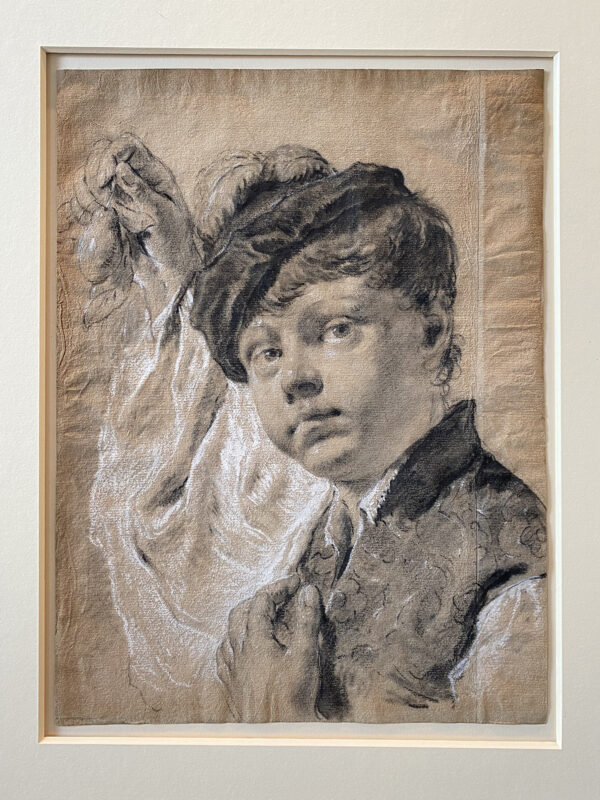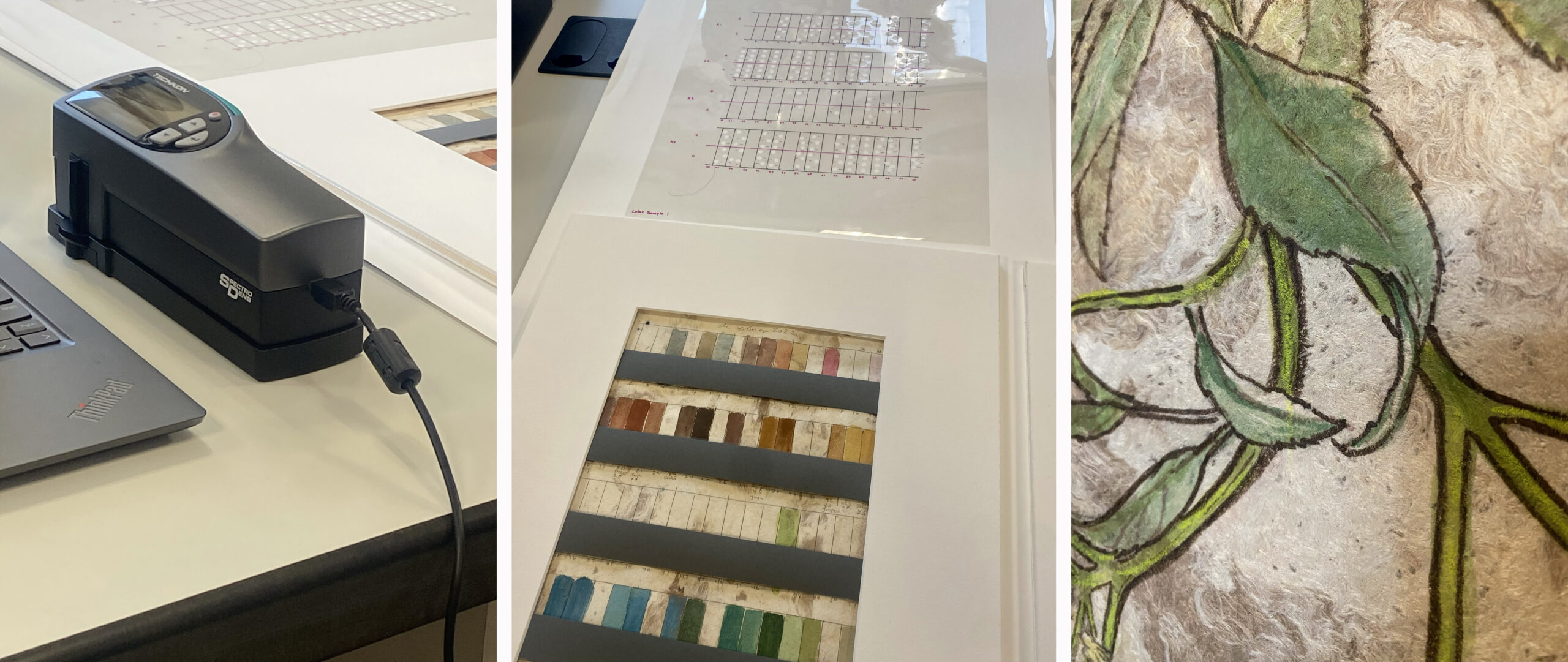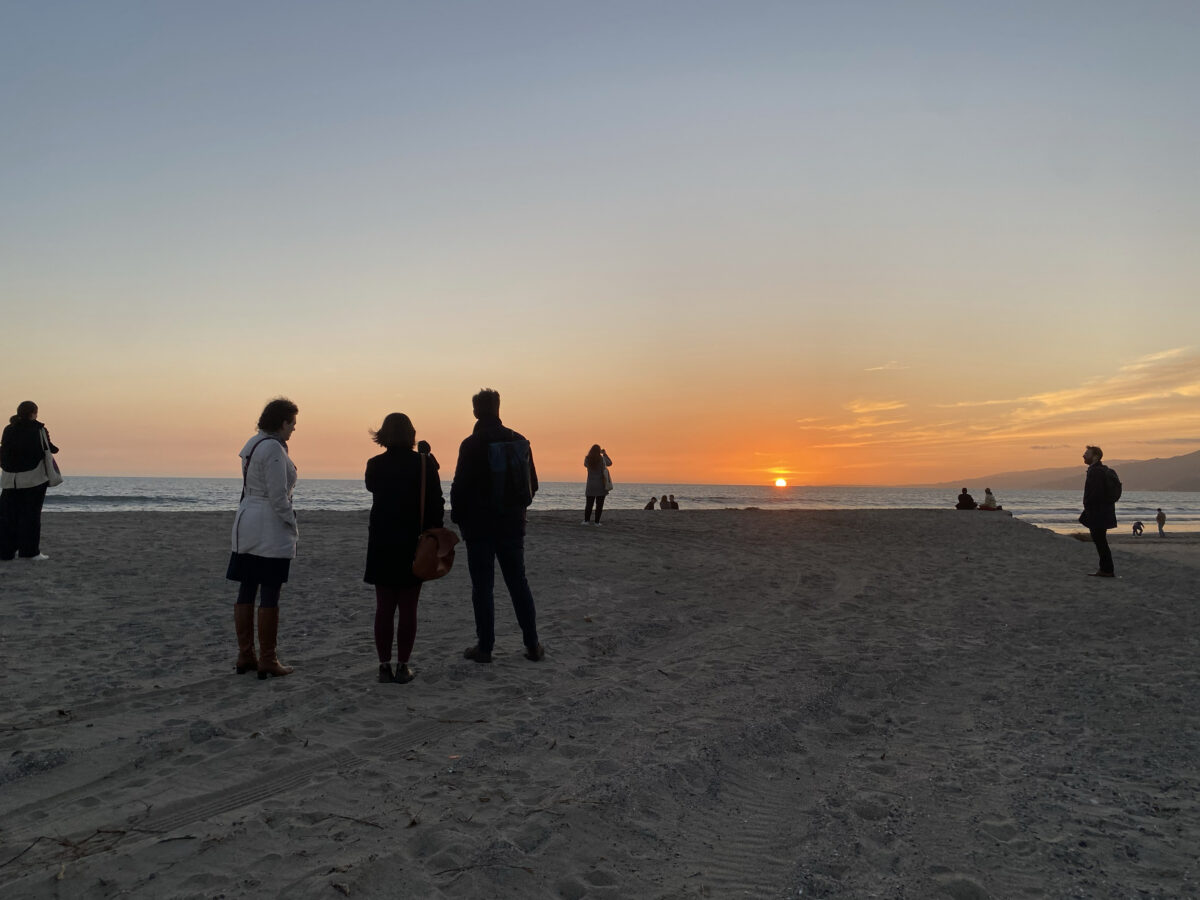In March 2022, I was accepted into the J. Paul Getty Museum’s fully funded ‘Color on Paper’ workshop, as one of 12 mid-career curators and conservators. This opportunity was developed in conjunction with the Getty Foundation’s Paper Project Initiative to promote cross-regional and cultural dialogue between curators and conservators, and deepen learning about technical art history, its tools, and applications, as they relate to colour in pre-1900 works on paper.
The workshop was organised by the Getty Center’s Michelle Sullivan (Associate Conservator of Drawings), Edina Adam (Assistant Curator of Drawings) and Casey Lee (Curatorial Assistant). Participants included a mix of institutional and private practice curators and conservators from across the USA, England, Germany, Sweden, and the Netherlands.
Seminars (June–November 2022)
The first part of the workshop comprised six online seminars. Each included approximately three hours of prerequisite reading, an hour-long lecture by a subject specialist on the materiality, function and meaning of colour in works on paper, followed by an hour of enthusiastic discussion. Besides revelling in the technical titbits only available through access to subject specialists (participants included), we covered everything from colour change and its impact on an art historical reading; the materials and techniques of 16th-century Iranian manuscripts; to the social impacts of the aquatint printmaking technique on 18th-century Europe.
For the seminar program, please see Table 1.
Residency (26 February – 3 March 2023)
The second part of the workshop comprised a week-long residency in Los Angeles. The program was primarily situated at the Getty Center campus, which includes the Museum (GM), Research Institute (GRI), and Conservation Institute (GCI). We also enjoyed site visits to study paper-based collections and learnt from experts in the field at the Huntington, the Los Angeles County Museum of Art (LACMA), and the painting studio of contemporary Chicana artist Sandy Rodriguez. A particular highlight was an experiential workshop in pigment processing run by Rodriguez at the GRI.
For an overview of the residency program, please see Table 2.

Getty Center (Day 1).
Themes and highlights
The ‘Color on Paper’ workshop provided an inspiring and affirming opportunity to engage with and learn from international colleagues and subject specialists. It would be impossible to account for the full significance of the experience, which ran just shy of one year. Therefore, I will instead focus on four recurring themes I noticed.
Be more open about material change and what that means
Harriet Stratis’ presentation, ‘Shifting Perspectives: Color Change and Its Impact on Art Historical Discourse’ (Seminar 2), really got at the heart of why the study of colour is important to our work – beyond its usefulness to practical collection care activities. She reminded us that it is our responsibility not only to be collection experts to inform appropriate object care, but to educate the public and contribute to the object record. It is crucial that this information is accurate to help preserve the historical narrative.
Stratis talked about how, in a museum context, the average person logically interprets artworks as ‘indelible monuments to an artist’s vision’ – when we know that this isn’t always the case. Artist choices aren’t random, nor should they be loosely or inaccurately described. For example, she described how iron gall, bistre and sepia inks have very specific tones and working properties; they wouldn’t have been viewed at the time as interchangeable brown inks. She asked that we think about how we can share these insights with the public. This could be as simple as contributing to the catalogue record or exhibition labels, e.g., ‘colour shift has occurred’ or ‘this item has been [washed/retouched] for visual cohesion’. At the other end of the spectrum, Stratis shared a technical study that enabled digital re-colourisation of Paul Gauguin’s Sketch of a Maori Woman and Child (1891/93, Art Institute of Chicago).
Workshop organisers Edina Adam and Michelle Sullivan alluded to the dangers of misidentifying colour during their presentation, ‘Drawing on Blue: European Drawings on Blue Paper 1400s–1700s’ (Day 1). Their research was to learn more about the production of handmade blue papers and their associated colour shift. To do this, they analysed over 80 drawings on blue paper in the Getty collection. During this project they discovered that some drawings, described as being on ‘buff’ paper in the item records, showed traces of blue colourants under analysis. See example below. This research has allowed them to rectify the public record and thereby honour the art historical narrative.

A boy holding a pear (Giacomo Piazzetta?) by Giovanni Battista Piazzetta, c.1737 (86.GB.677, Drawings Collection, Getty Museum), illustrating the paper colour shift from blue to brown.
We often underestimate the public appetite for specialist information. Many anecdotes from curators and conservators throughout the workshop attested to this fact. This was beautifully highlighted in Rodriguez’ education room component of the Borderlands exhibition (Day 3), which included samples of raw colourants and papers, as well as video documentation of traditional amate papermaking practices, described as highly popular by the curator Dennis Carr.

Education room at the Borderlands exhibition, Virginia Steele Scott Galleries of American Art, The Huntington.
Be wary of prioritising written sources over actual objects
This came up a lot in the workshop, from lecturers and participants alike.
While those of us without immediate access to instrumental analysis and expertise may be tempted to rely on literary resources, presenters urged us to look to the actual objects. Dr Iris Brahms (Seminar 1) underscored the fact that art historic views were often based on black and white images, while treatises were usually written by people who weren’t artists themselves. This sentiment was reiterated in Sullivan and Adam’s presentation, ‘Drawing on Blue: European Drawings on Blue Paper 1400s–1700s’ (Day 1). They noted that several literary sources described early blue papers as solely cheap or low-quality supports. However, throughout this research they observed a level of care that contradicted this low-quality status, e.g., the presence of sizing, the use of blue papers in early special edition books.
Massumeh Farhad (Seminar 5) reminded us that the artists themselves are not always to be relied upon either, giving the example that many sources written by Mughal painters named zinc white as the pigment used, when it was in fact lead white. Olivia Kuzio (Professional Fellow, GCI) reiterated this fact when presenting her technical study of a sample of tints made by a student of Josef Albers (Day 1). Analysis revealed that the so-called strontium and barium yellow were composed of chrome green (chromium). In the student’s defence, we were reminded by Harriet Stratis during a collection viewing of 19th century material sample books: the industry ‘sells colours, not chemicals!’
There’s no substitute for learning by ‘making’
Practical experience in the ‘making’ is invaluable to understanding materials and techniques. This was reinforced during the experiential workshop with Sandy Rodriguez (Day 3). For example, when grinding azurite and antlerite and discovering how over-processing produces a grey product, while not enough gives a gritty product. Or when applying the prepared cochineal watercolour to various surfaces and discovering that only the parchment was able to maintain the cochineal’s red-purple tone, thanks to its inherent alkalinity, though it was the most difficult surface to paint on.
Naoko Takahatake (Day 4) discussed the criticality of practical knowledge when collaborating on an in-depth research project of chiaroscuro woodcut prints with Linda Stiber Morenus (former Paper Conservator, Library of Congress). The goal was to better understand the aesthetic results of chiaroscuro printing variables to accurately describe the collection. The first stage was to undertake printing experiments to develop a shared language from which the two could effectively communicate their observations. Some of my favourite descriptors include ‘squash’ – where pressure causes the ink to move laterally, and ‘channelled squash’ – where the ink moves so much that you get a small white line in the middle of the matrix line.

Examples of printing experiments undertaken by Linda Stiber Morenus and Naoko Takahatake to better understand chiaroscuro printing variables.
The importance of developing a shared language was a key concern of Harriet Stratis. In Seminar 2 she affirmed that the key to successfully communicating change with each other, and ultimately with the viewer, is to establish a shared vocabulary among curators and conservators that provides clarity through accurate identification of myriad materials and the paper itself. It was unsurprising to discover that she was involved in the working group for the Guidelines for descriptive terminology for works of art on paper (Philadelphia Museum of Art 2014).
Collaborate and consult as widely as possible
Harriet Stratis put it perfectly in Seminar 2 when she said: ‘Dialogue sharpens seeing!’ and ‘Collaboration presents new questions and new answers.’ My interpretation is that our perspective is not the only perspective that makes up the story or significance of an item. By talking with others—not just allied fields, but the makers and consumers of culture—we create a fuller picture that can only serve to benefit our work and theirs.
During the tour of the Huntington’s conservation laboratory, I noticed that a paper conservator was testing the lightfastness of natural plant colourants used by Sandy Rodriguez with the Techkon SpectroDens (Advanced v2 Spectro-Densitometer v2). This research not only helps Rodriguez in her artmaking practice, for which she sources and hand-processes her own colourants, but it benefits the public through Rodriguez’ research into native plants and Indigenous knowledge, and in turn assists collection care activities as they build their knowledge of traditional colourants and their ageing characteristics.

Left and centre: Colourant testing in the conservation laboratory at The Huntington. Right: Detail of artwork on amate paper by Sandy Rodriguez in the Borderlands exhibition, The Huntington.
There were unending other examples of collaboration throughout the workshop. The workshop itself was the result of a collaboration between Getty Center departments, in the hopes of engendering future collaborations across disciplines, cultures and geographies. In fact, this was the first Paper Project Initiative to be open to professionals outside of the curatorial profession: in this case conservators!
Collaboration is crucial to my work, and I feel fortunate that our industry is incredibly collegiate. I realised this especially when Edina Adam asked in the closing remarks: ‘Given 10 years and unlimited resources, what do you want to achieve in your career?’ As an institution without ready access to instrumental analysis, my goal has been to develop a closer network with better-equipped organisations. This would enable us to contribute more effectively to the body of knowledge on our wonderful State collection. Prompted to think bigger—given ‘unlimited resources’—I asked in response: ‘If you could only have one piece of instrumentation in your workplaces, what would it be?’ Nearly unanimously from conservators and curators alike, the response was: ‘the VSC’ (video spectral comparator)! This is now on the ‘pot of gold’ wish list. I’d love to hear from anyone who has experience with this equipment.

A beach stroll before our farewell dinner, Santa Monica.
For more information on the online seminars, residency, and associated readings, please don’t hesitate to reach out.
Table 1: Seminar program (June–November 2022)
| Seminar 1
2 June |
‘Color on Paper! Synergy and Divergency in European Drawings of the Early Modern Period’
Iris Brahms, Interim Professor, Department of Art History, University of Hamburg |
| Seminar 2
29 June |
‘Shifting Perspectives: Color Change and its Impact on Art Historical Discourse’
Harriet K Stratis, Paper Conservator and Technical Art Historian, Stratis Fine Art Conservation, Chicago and New York |
| Seminar 3
28 September |
‘Aquatint: “a very beautiful mode of multiplying drawings”’
Rena M Hoisington, Curator and Head of Old Master Prints, National Gallery of Art, Washington DC |
| Seminar 4
19 October |
‘The Colorful World of Japanese Prints: Technology, Competition, Globalization’
Sarah E Thompson, Curator of Japanese Art, Museum of Fine Arts, Boston |
| Seminar 5
8 November |
‘The Gift of Color: The Arts of the Book in Iran’
Massumeh Farhad, Senior Associate Director for Research, Freer Gallery of Art, Washington DC |
| Seminar 6
29 November |
‘Scintillating Sheets: Decorated Papers in Early Modern Islamicate Manuscripts and their Impact’
Jake Benson, Research Associate (Persian Collections), John Rylands Research Institute and Library, University of Manchester |
Table 2: Residency program (February–March 2023)
| Welcome
Sunday 26 February Getty Center |
· Gallery floor talks with Getty curators: Beth Morrison (Manuscripts), Julian Brooks (Drawings), Anne-Lise Desmas (Sculpture and Decorative Arts), Davide Gasparotto (Paintings)
· Welcome reception, GRI Lecture Hall |
| Day 1
Monday 27 February Getty Center |
· Drawings study room visit and presentations with Stephanie Schrader (Curator, Drawings), Edina Adam and Michelle Sullivan (Assistant Curator, Drawings, and Associate Conservator, Drawings), and Margaret Grasselli (Visiting scholar, Drawings)
· Special collections visit with David Brafman (Associate Curator of Rare Books, GRI) and Harriet Stratis (Stratis Fine Art Conservation) · Getty Conservation Institute (GCI) presentations with Olivia Kuzio (Professional Fellow, GCI) and Karen Trentelman (Senior Scientist, GCI) · Barbara T Smith Exhibition Opening, GRI · Welcome dinner at Jon & Vinny’s, Brentwood |
| Day 2
Tuesday 28 February The Huntington |
· Tour of The Huntington Gardens with Sandy Rodriguez (Chicana artist and 2020–21 Caltech–Huntington Art and Research Fellow) and Sean Lahmeyer (Plant Collections and Conservation Manager, The Huntington)
· Tour of The Huntington Galleries with Sandy Rodriguez and Dennis Carr (Virginia Steele Scott Chief Curator of American Art, The Huntington) · Prints study room visit with Jessamy Gloor (Paper Conservator, The Huntington) and Melinda McCurdy (Curator of British Art, The Huntington) · Conservation laboratory presentations with book and paper conservators |
| Day 3
Wednesday 1 March Artist studio Getty Center |
· Sandy Rodriguez artist studio visit in Mar Vista
· Experiential pigment workshop with Sandy Rodriguez in GRI Lecture Hall |
| Day 4
Thursday 2 March LACMA
|
· Chiaroscuro woodcut presentation with Naoko Takahatake (Curator, GRI)
· Japanese woodblock prints presentation with Hollis Goodall (Curator of Japanese Art, LACMA) and Soko Furuhata (Paper Conservator, LACMA), Conservation Center · Tour of paper conservation laboratory with Soko Furuhata |
| Day 5
Friday 3 March Getty Center |
· Participant presentations, Boardroom
· Closing discussion, Boardroom · Farewell dinner, Tallula’s Restaurant, Santa Monica |